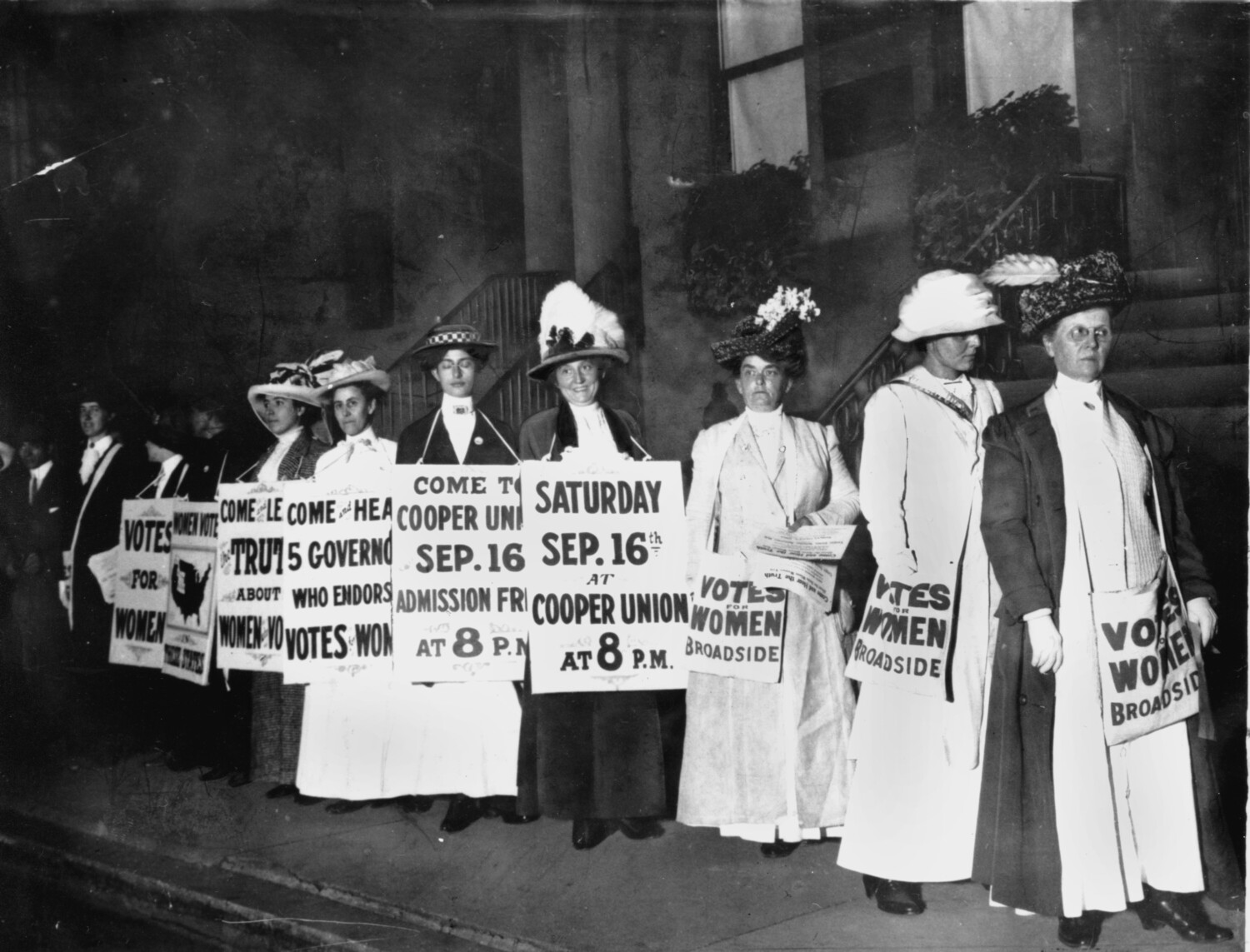“Women’s history is women’s right.”
These famous words were voiced by feminist icon Gerda Lerner, an Austrian-born historian, Nazi survivor and women’s liberation advocate. Lerner’s words were later quoted by President Jimmy Carter in 1980 when he designated March 2-8 as National Women’s History Week.
Seven years later in 1987, that week expanded to an entire month dedicated to commemorating the invaluable contributions of American women. Women’s rights activists including Lerner, Molly Murphy MacGregor, Maria Cuevas and Bette Morgan played an important role in getting the White House to make March Women’s History Month.
As part of the month’s celebrations, you will often see flags or emblems with the colors purple, white and green. These choices are not arbitrary, nor are they exclusive to Americans. In countries such as the United Kingdom, women often don these colors to celebrate women’s rights. Below is a 2018 picture of women in London marching in the colors purple, white and green to celebrate the 100th anniversary of women earning the right to vote (women in the U.K. won the right to vote in 1918, while women in the U.S. finally did so in 1920).

But what do these three colors signify, and when did they first become associated with the women’s rights movement? The answer lies in the early 20th century. British suffragettes Emmeline Pankhurst and her daughters Sylvia and Christabel founded the Women’s Social and Political Union (WSPU) in 1903. As the movement grew and gained national attention, the women of WSPU realized that they needed to select colors for a group flag.
In advance of their suffragette march and rally on June 21, 1908 — also known as Women’s Sunday — the WSPU selected the colors purple, green and white for their organization. Historians say that the choice was made by WSPU member Emmeline Pethick-Lawrence, who was also an author and activist. She chose green for hope, white for purity and violet for loyalty. The letters of these colors also serve as an acrostic for Give Women the Vote (G for green, W for white and V for violet).
Meanwhile, American women were also fighting for the right to vote and realized they needed a symbol to unite and represent their cause. American suffragette Alice Paul was inspired to choose colors similar to those of suffragettes in the United Kingdom. However, instead of using white, purple and green, she chose gold, white and violet.
Gold or yellow had long been associated with the American suffragist cause. The sunflower, Kansas’ state flower, was used frequently by Elizabeth Cady Stanton and Susan B. Anthony when they were fighting for women’s right to vote in Kansas.
In addition, suffragists in the American West often used yellow flowers or yellow ribbons. At an 1892 suffrage rally in Utah, men wore sunflowers and women wore yellow ribbons. Hence, the color had a long, storied history in American women’s fight for the vote.
“Purple is the color of loyalty, constancy to purpose, unswerving steadfastness to a cause,” a 1913 edition of The Suffragist explained. “White, the emblem of purity, symbolizes the quality of our purpose; and gold, the color of light and life, is as the torch that guides our purpose, pure and unswerving.”

While American suffragettes might have chosen a slightly different color scheme than their intentional peers, the color purple has become the global color that women wear to celebrate International Women’s Day on March 8. Of course, wearing purple, green and white or purple, green and gold is also a great way to show your pride during Women’s History Month. Whatever hue you choose, just remember the courageous women behind those colors who helped to make this country (and the world) a more equitable place for women and girls.
This story originally appeared on Simplemost. Check out Simplemost for additional stories.


